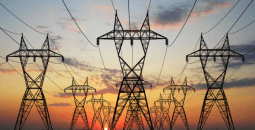

Eskom is working hard on preparations to increase the length of new transmission and distribution lines to up to 800km per year in the next three years, from as low as 300km last year, according to new CEO Dan Marokane.
Marokane addressed the media on Friday 14 June as he reached the 100-day milestone in what is considered the most difficult job in South Africa.
He said the unbundling of Eskom has been too slow, but its transmission business will be standing on its own legs from 1 July as the National Transmission Company of South Africa (NTCSA).
It will still be based at Eskom’s Megawatt Park head office, but will function independently as a subsidiary of the utility with its own executive and board. The company has already obtained the necessary licences from regulator Nersa.
Grid access
The operationalising of the NTCSA comes as access to the grid is becoming an increasing problem. In the Eastern, Western and Northern Cape, where the best renewable resources are, the grid is all but saturated.
This led to the failure of Bid Window 6 of government’s Renewable Energy Independent Power Producer Procurement (Reippp) programme as Eskom was unable to provide grid connections to 23 wind projects.
Bid Window 7 has been delayed in the absence of a solution.
Eskom has now proposed to Nersa that grid capacity be reserved for independent power producers (IPPs) that are developing projects for the state, leaving those doing business with the private sector high and dry.
Nersa is currently consulting stakeholders on the highly contentious matter.
Minister of Electricity Kgosientsho Ramokgopa previously promised a plan for outsourcing the construction of new lines to the private sector on a finance-build-operate-transfer basis. After hosting an investor conference, he said there is huge appetite in the market, but he referred the matter to the newly appointed NTCSA board early this year and no progress has been seen since.
At Marokane’s briefing, Segomoco Scheppers – who will lead the NTCSA – said his team is working hard with Ramokgopa on the plans for outsourcing and “this report that will then be shared once that work is adequately advanced with Eskom as the shareholder of NTCSA”.
Supply chain
Marokane said Eskom’s transmission division was previously able to build 800km per year and hopes to increase its delivery to the same level within 36 months.
“What drives [the] ability to construct a significant number of kilometres per year is the readiness of the value chain – [a] sufficient number of companies that can execute at the right level, and the right level in terms of pace and safety,” he said.
Several companies that used to support Eskom’s line construction have however “gone bust because there was no certainty with regards to the pipeline” of work.
The transmission team has now been hard at work to prepare the market to support the required level of execution.
The supply chain needs to be ready to supply transformers, cabling and all other requirements, and Eskom must understand what will be available locally and what will have to be imported.
“And in this whole process we also have to look carefully at how we enable these opportunities to drive local industrialisation,” said Marokane.
“The team is besieged with preparing that once we take off [so] we can get back to the [previous] level of execution.”
Bigger picture strategy
Marokane said apart from focusing on Eskom’s operational recovery, which has seen it refrain from instituting load shedding for more than 80 days, he has also been working on a strategy to take Eskom into the future.
Eskom distribution will be the next to unbundle and the staff are already working on new products to serve a rapidly changing market. The timeline for operationalising the National Electricity Distribution Company of South Africa (NEDCSA) is 12-24 months.
The establishment and operationalising of an independent generation business is scheduled for within 24-36 months.
Marokane said Eskom’s future generation portfolio will comprise the coal fleet, renewables, gas-to-power, hydro and nuclear energy.
He told Moneyweb that while big nuclear is dealt with by the Department of Mineral Resources and Energy, Eskom is working with the Nuclear Energy Corporation of South Africa (Necsa) on the possibility of deploying small, modular nuclear reactors as part of its programme to repower and repurpose its old coal-fired power stations as they come to end-of-life.
The utility has a pipeline of 2 000MW of renewable projects ready for implementation over the next two years. It will approach the market “very shortly” for the implementation of a solar photovoltaic project at its decommissioned Komati Power Station in Mpumalanga. – bbc.com